Parent’s Guide: Going to the supermarket
Annette Rawstrone
Monday, March 4, 2019
From planning the outing to turning it into an educational and fun experience while you’re there, Annette Rawstrone gives some tips on grocery shopping with children

Download the PDF of this article
Thinking of taking your child to the supermarket may bring to mind images of squabbles in the sweet aisle and tantrums at the tills, but it can, in fact, be a valuable learning experience for your child.
Just consider the opportunity to look at different produce, chat about where food comes from and the wealth of numeracy and literacy learning while also getting a chore done.
CONSIDER THE PRACTICALITIES
Plan the best time to take your child to the supermarket. Avoid going at peak shopping times and when your child is going to be hungry or tired.
Think about your local supermarket – whether there is a toilet, if there are trolleys that your child can sit in and whether there are child-friendly initiatives such as free fruit to eat while shopping.
Talk to your child about the supermarket trip beforehand to help avert any anxiety and to get the most out of the experience. Tell them what you’re planning on doing and show them pictures of different supermarkets, share YouTube clips or read relevant story books.
Discuss what you need to take with you to the supermarket and why, such as a shopping list to remind you what to buy; money so that you can pay for the items, and bags so that you can carry your shopping home easily.
Chat about how your child should behave in the supermarket, such as staying close to the trolley, not putting things in their pockets or demanding items that are not on the shopping list.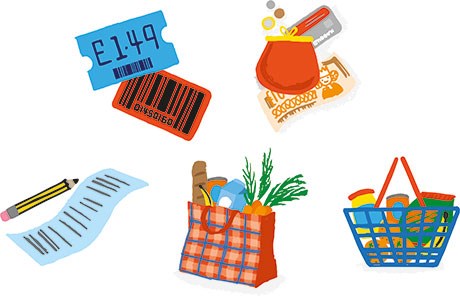
HOW YOUR CHILD IS BENEFITING
Understanding of the world
Your child can link their supermarket experience to small-world play or role-playing shops with their friends at nursery and talking about popular topics such as ‘people who help us’ – discuss the different roles of key supermarket employees such as fishmonger, butcher and baker.
Shopping can also help your child to understand where their food comes from – that bananas grow on tall plants and that sausages or milk come from animals. You could talk about the different countries where food is grown and whether it needs to be a hot or cold country. In bigger supermarkets, you can also visit the different departments, such as the fishmonger, and look at the whole fish or the bakery and talk about how bread is made.
Vocabulary development
Talk to your child as you look around the supermarket; you’ll be amazed by how many new words you’re introducing to them – aisle, cashier, conveyor belt, trolley… and that’s before you start naming the wide variety of produce.
Allow your child to handle the fruit and vegetables carefully. Discuss shape, colour and texture and compare them. Include your child in the decision-making, such as whether to buy vegetable or chicken soup.
Literacy and numeracy
Spot the environmental print, from signs on aisles to labels on shelves and produce.
Encourage your child to look for different items and cross them off your list. Also, look at the aisle numbers or price labels.
Ask your child to count four apples into your trolley or work together and use numbers to solve problems and make decisions, such as: ‘We need four yoghurts and we only have one. How many more do we need to buy?’
Opportunities to interact
The visit will support your child in becoming more outgoing towards unfamiliar people and more confident in new situations. Perhaps they could ask for something at the bakery, hand over money to the cashier, or wave hello and goodbye to the security guard.
After the event
Ask your child to help to put away the shopping when you get home. Talk to them about what you’ve bought and what you’ll use it for. Perhaps your child could help you to cook a simple meal.
Encourage them to talk about their supermarket trip and put events in the correct order, such as putting the food in the trolley before paying for it and taking it home.
What may seem like a trivial experience to you will build their imagination and lead to more detailed role play. You could set up a ‘shop’ at home with a variety of empty bottles and packages and shopping bags.
STORY TIME
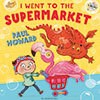 I Went to the Supermarket by Paul Howard
I Went to the Supermarket by Paul Howard
A game of ‘I Went to the Supermarket…’ has a messy end when the children’s words come to life.
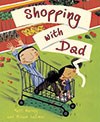 Shopping with Dad by Matt Harvey and Miriam Latimer
Shopping with Dad by Matt Harvey and Miriam Latimer
A supermarket trip turns into an adventure for a small girl and her dad.
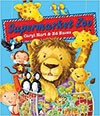 Supermarket Zoo by Caryl Hart and Ed Eaves
Supermarket Zoo by Caryl Hart and Ed Eaves
Albie thinks shopping is boring until he goes to a supermarket zoo and endsup with a trolley full of animals.
 Don’t Forget the Bacon! by Pat Hutchins
Don’t Forget the Bacon! by Pat Hutchins
A young boy sets out to do the shopping, determined to remember his simple list, but as the sights and sounds of town distract him, he finds himself in a terrible muddle.
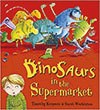 Dinosaurs in the Supermarket! by Timothy Knapman and Sarah Warburton
Dinosaurs in the Supermarket! by Timothy Knapman and Sarah Warburton
‘There’s a T Rex gobbling sausages, a Stegosaurus spilling beans! A Diplodocus in the frozen peas fills the aisles with greens!’ Can the little boy convince the dinosaurs to behave?




